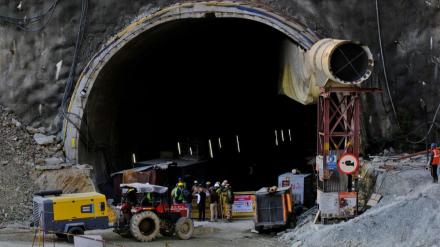Ten days after the accident, the country still awaits the rescue of 41 workers trapped in a collapsed tunnel in the Silkyara-Polgaon tunnel in Uttarkashi. The government’s handling of the crisis has been anything but reassuring. It initially projected it as a simple affair that would be over in days, but is now struggling to find the right methods, exposing how poorly prepared we are for disasters like this. Making matters worse, there seems to be little clarity on timelines of the rescue operation within the government itself. While the Union road transport and highways minister said that the workers will be rescued within two-and-a-half days, one of the experts sent by the Prime Minister’s Office to assess the situation and aid rescue efforts said this would be only possible in “another 4-5” days. At a time when each day saved is critical for the well-being of the trapped workers, such divergence will only heighten the anxiety of the families of those who are trapped.
Without a well-coordinated approach harnessing relevant expertise from all possible sources, the government can’t inspire confidence in its post facto rescue planning. To that end, the news that work on vertical drilling, one of the five options in the government’s action plan, has begun, and that professor Arnold Dix, a globally acclaimed expert on tunnel safety and disaster investigations, has joined the efforts should rekindle faith in the operations.
That said, the tunnel-collapse is yet another reminder of India’s deeply flawed approach to large infrastructure projects in the fragile Himalayan terrain. As always, disregard for the rules of nature results in deadly blowbacks in the form of landslides. In May, a mountainside crumbled near Helang on the way to Joshimath town in Uttarakhand, as road widening activities were happening. Before that, in January, the country had woken up to the news of land subsidence in parts of Joshimath, because of large-scale drilling and construction activities under the same infrastructure project that the Silkyara tunnel is a part of—the Char Dham highway project. A poorly-thought-through spurt in road and other infrastructure construction has been the bane of the Himalayan states for long now—Uttarakhand is the most prominent example of this, but it is by no means the only one, as the disaster in Sikkim in October showed.
As much as the remote mountain states need connectivity and other infrastructure, there seems to be a callous indifference to the opinion of environmentalists and other specialists in policy circles. Their concerns and warnings are heard, but seldom acted upon. The Char Dham project is a perfect example, where the pulls of populist politics have trumped geoscientific reasoning. All criticisms have been projected as opposition to the need for better infrastructure for pilgrims and security and defence of the nation. The government had told the Supreme Court in 2019 that the project was essential to the easier movement of soldiers and ammunition. Given the tensions with China, this was a stick to silence those who questioned the project or raised the need for considering alternatives. If there is official airbrushing of the causes of the present crisis, and the can is kicked further down the road on reviewing infrastructure projects in the Himalayan states, we would be setting ourselves up for worse disasters.
